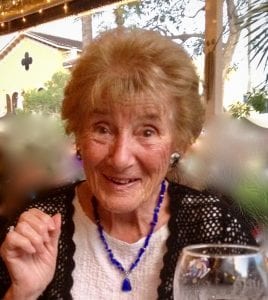By Leah Chiappino
Local entrepreneur Stacey Wohl has moved her store, Be(Cause) Lifestyle Boutique, which first opened Nov. 22, from its original East Northport location to Wading River Square. Despite the change in location, it still has the same mission, to give people with disabilities a chance at employment.
In 2015, Wohl opened Cause Cafe in Northport, a restaurant that employed people on the autism spectrum, with the help of her parents, Susan and Gerald Schultz. Her interest in doing so was taken from her own two children, Brittney, 22, and Logan, 20, both of whom have autism.
Wohl says the business struggled because of the lack of a nonprofit being able to subsidize the rent. Her children were unable to work in the kitchen as the environment could get chaotic, and it grew very loud.
“When you own a business, you have to do everything, and I am not a chef,” Wohl said. “It was a very large undertaking that we weren’t prepared for.”
Despite putting her best efforts into it, Wohl was forced to shut down the restaurant when it was not able to sustain itself and personal tragedy struck. In 2016, Cause Cafe was featured on the Rachel Ray Show, which sent Wohl on a cruise with her children and parents. Two days into the trip, her father had a heart attack while dancing with her mother on the ship and passed away.
When the family returned home, Wohl closed the doors, as she felt the need to care for her mother, who was mourning the loss of a husband of 55 years.
Wohl’s first love is fashion, having been a showroom salesperson, fit model and boutique owner in her 20s, so she opened Be(Cause) Lifestyle Boutique in East Northport. However, tragedy struck again when her mother passed away three weeks later. Wohl relocated to Wading River after her daughter got accepted to a day program in Abequogue.
“I saw the need for a place like this,”
Wohl said.
The front of the store has a coffee bar with repackaged baked goods to take home, complete with inspirational coffee mugs for sale. The back of the store is filled with apparel and gifts that mostly come from women-owned companies and charitable causes. There is local artwork for sale as well as her own coffee brand.
“I want the store to be a place where people go to buy a gift, and not just feel like they are doing something for charity,” Wohl said.
Recently the business has been struggling. Business boomed over Christmas, but after the holidays business slowed down.
“I only sold one $3 dollar cup of coffee today,” Wohl said. However, she affirms the community has been very supportive. Wohl hopes that people will make the store their go-to place to grab a cup of coffee and is even looking to expand to have art classes and job training. She is also hoping to make a clothing line from her former fashion background.
“I lost that part of myself in [dedicating myself to my children] for the past 20 years.”
The boutique is located at 6278 Building A, #2 along Route 25A in Wading River and is open Wednesdays from 10 a.m. to 4 p.m., Thursdays and Fridays from 10 a.m. to 5 p.m., Saturdays from 9:30 a.m. to 5 p.m. and Sundays from 11:30 a.m. to 5.p.m. Online ordering is also available through the boutique’s website at www.becauseboutiquecafe.com.



 We have focused a large amount of effort on the treatment and prevention of hypertension (high blood pressure) in the U.S. This insidious disorder includes prehypertension —defined as a systolic blood pressure (the top number) of 120-139 mmHg and/or a diastolic blood pressure (the bottom number) of 80-89 mmHg. Prehypertension is pervasive in the United States, affecting approximately one-third of people (1).
We have focused a large amount of effort on the treatment and prevention of hypertension (high blood pressure) in the U.S. This insidious disorder includes prehypertension —defined as a systolic blood pressure (the top number) of 120-139 mmHg and/or a diastolic blood pressure (the bottom number) of 80-89 mmHg. Prehypertension is pervasive in the United States, affecting approximately one-third of people (1).







 Johannes was born Aug. 7, 1925 and grew up in Jamaica, Queens in the loving, extended-family home of her parents, Madeline and Raphael Geronimo, along with her four sisters, one brother and their families.
Johannes was born Aug. 7, 1925 and grew up in Jamaica, Queens in the loving, extended-family home of her parents, Madeline and Raphael Geronimo, along with her four sisters, one brother and their families.












